Strawberries are among everyone’s favorite fruit, but it isn’t always easy to keep them stocked at home. If you’re one of those people who would like to enjoy strawberries all year round, dehydrated strawberries might be your answer.
Dehydrated strawberries are still full of nutrients, so you will be making delicious and healthy treats for yourself and your family.
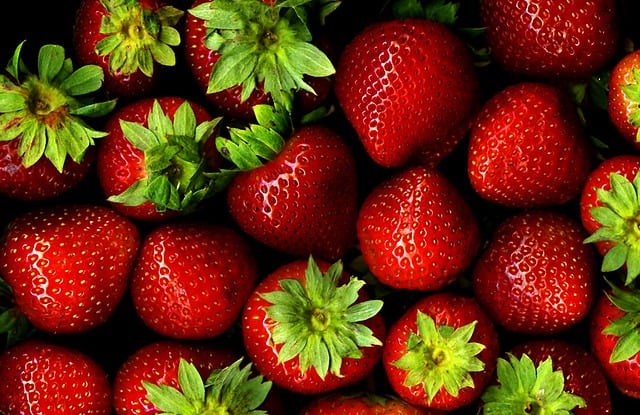
It’s possible to buy freeze-dried or dehydrated strawberries, but it’s much cheaper and healthier to make your own. And in recipes, the only limit is your imagination. You can bake dehydrated strawberries into cupcakes and muffins, add them to cereal and granola bars, or mix them with milk and honey for a perfect pick-me-up smoothie.
In this article, we will discuss the benefits of dehydrated strawberries, methods of dehydration for those who don’t own a dehydrator, as well as the many uses of this nutritious and versatile treat.
Why Dehydrated Strawberries?
Dehydrated strawberries are a healthy, versatile, handy, and delicious snack. In fact, you probably agree with us, or you wouldn’t be reading this article. Perhaps what you want to know is how to get your hands on some dehydrated strawberries so you can use them whenever the cravings strike. We’ll get to that shortly, but first, let’s look at what makes dehydrated strawberries so great.
No matter how much you love strawberries, you have probably had some go bad before you could gobble them up. Fresh strawberries begin to deteriorate in the kitchen, whether you keep them in the fridge or on the counter. One way to prevent wasted strawberries is to dehydrate them and store them in jars for use whenever they’re needed.
You can buy strawberries freeze-dried or dehydrated at the grocery store, but that’s not such a good idea. Not only is this path to dried strawberries expensive but store-bought dehydrated fruit usually contains chemicals and preservatives. It’s much healthier and cheaper to make your own. You can buy a dehydrator if you like, but it’s just as easy to use your oven, microwave, or toaster oven to dehydrate strawberries or other fruit.
Health Benefits of Dehydrated Strawberries
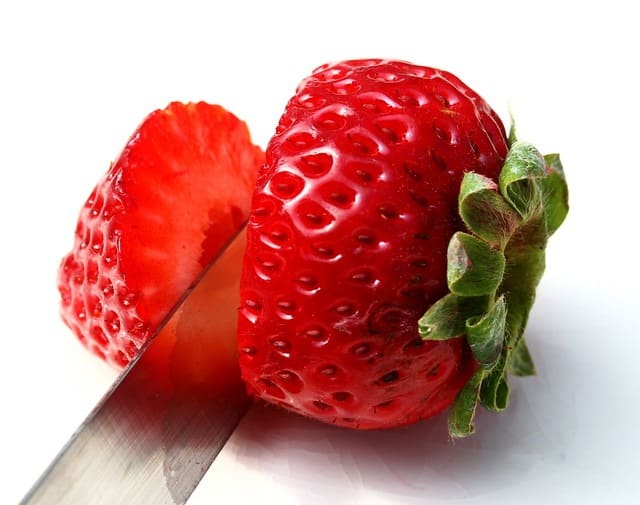
Nature gets it right most of the time, and with strawberries, we have a winner. Not only do they look cute, with that bright, cheerful red color and their eat-me shape, but they’re also delicious and full of nutrients.
The list of nutrients in strawberries is long and impressive, with vitamin C at the top. It also includes phytonutrients and antioxidants, as well as vitamin K, vitamin B5, vitamin B6, folic acid, potassium, riboflavin, manganese, copper, magnesium, and omega-3 fatty acids. That’s a lot of goodness in a tiny bite of fruit!
Dried strawberries and other fruit are light and easy to digest. Dried fruits make great snacks because they’re handy, portable, and provide a burst of energy just when you need it. And did we mention they’re delicious?
How to Drie Strawberries Without a Dehydrator?

Once you’ve decided that your life will be richer and healthier if you have some dehydrated strawberries handy at all times, the next step is to rush out and buy a dehydrator, right? Not really. You don’t need a special dehydrator to dehydrate strawberries or other fruit.
Your kitchen appliances—the oven, microwave, or even the toaster oven—can do the job. You can even dehydrate fruit by putting them out to dry in the sun. Let’s look at these methods in detail.
1. Prepare the Strawberries for Dehydration
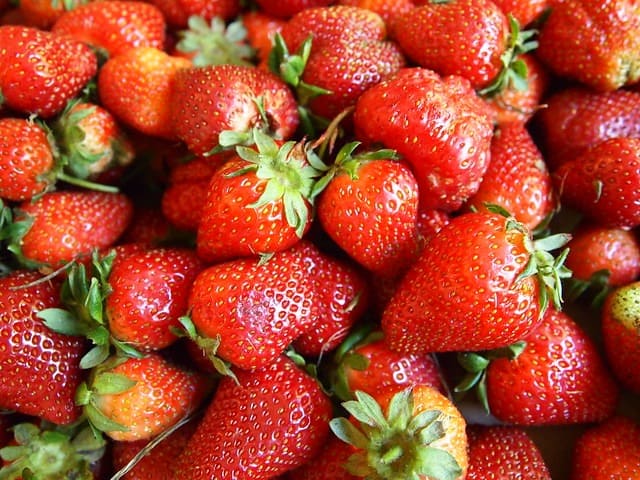
Essentially, when you dehydrate veggies or fruits, you’re drying them out to get rid of the moisture that lets bacteria grow. This helps to preserve the fruit for a long time, without using chemicals and preservatives. Drying fruit doesn’t remove its taste or nutrients, which is why dehydrated fruits are a delicious and healthy snack to keep around.
The best fruits to dehydrate (other than strawberries) are apples, apricots, peaches, plums, bananas, and all berries. The riper they are, the better they will taste when they have been dehydrated. The fruit should be washed, and stems, pits, and any brown spots should be removed. Next, the fruit should be sliced evenly, so it dries evenly.
2. Dehydrated Strawberries Using 4 Different Ways
1) Using the Oven for Dehydrated Strawberries
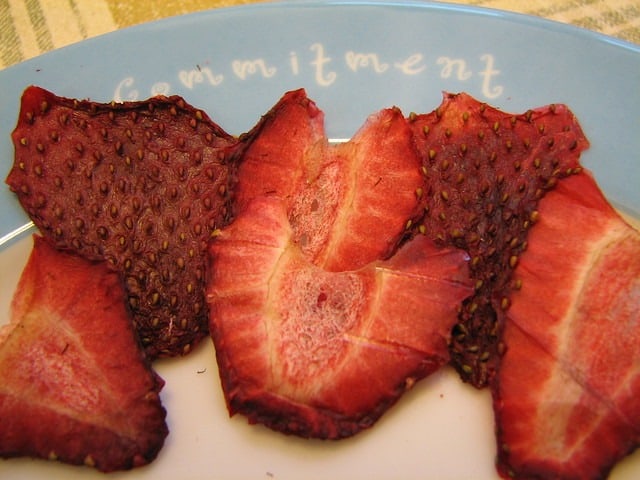
Slice strawberries into slices that are a quarter of an inch in thickness. Put them on a lined sheet pan and leave them in the oven at the lowest setting for 12 hours. For quicker drying, you can set the temperature at 225 F, but the taste is better if you use the slower method.
2) The Toaster Oven Method to Dehydrate Strawberries
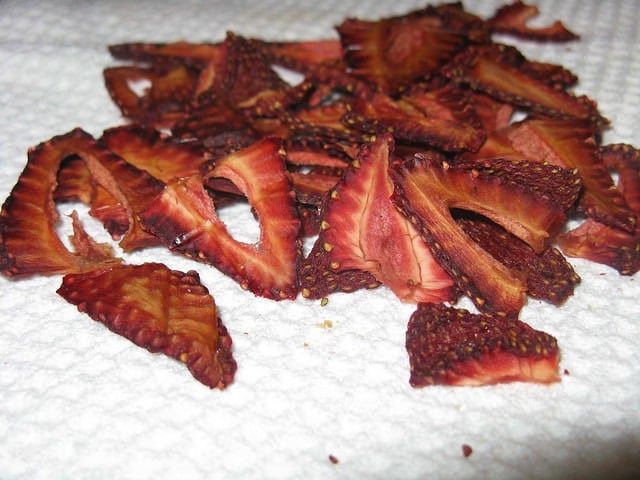
As with the oven, put the evenly sliced strawberries on a sheet pan and leave them in the oven at the lowest setting for seven or eight hours. Remember to leave the oven door open just a bit to prevent condensation.
3) Dehydrate Strawberries Using Microwave
Slice the fruit to a thickness of an eighth of an inch and place it on a glass plate that has been linked with a paper towel. Put the plate in the microwave at full power for ten minutes, followed by another ten minutes at the lowest power.
4) The Real, Old-Fashioned Way: Sun-Dried Strawberries
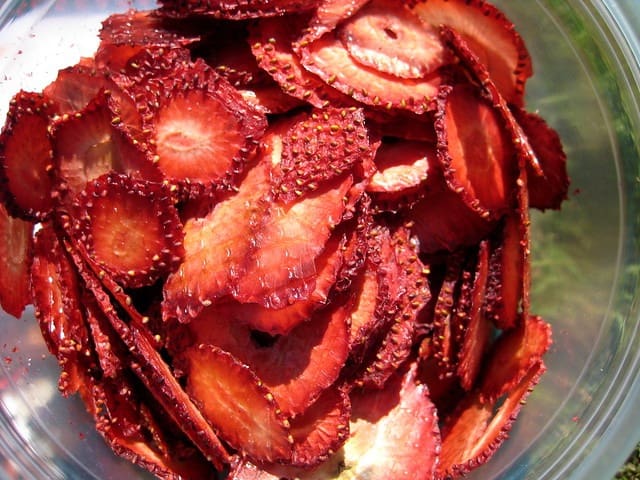
This can take a few days, but it’s an easy method and produces delicious dried fruit with a rich, natural flavor. Put the fruit slices on a baking sheet, cover them with mesh to keep away flies and bugs, and leave them in a very sunny spot for a few days.
3. Curing the Dried Strawberries
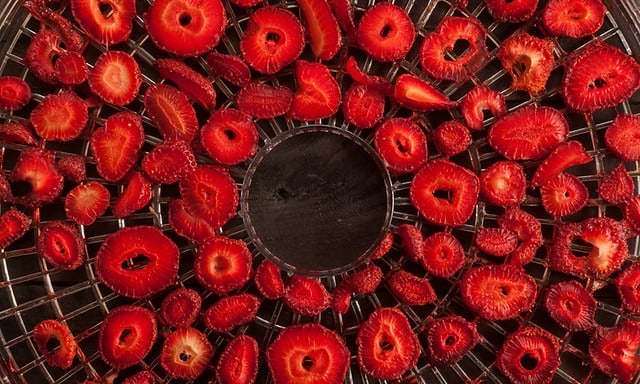
Once you’ve finished drying the fruit, you need to cure it. But first, check to see that all moisture has been removed. You can do this by putting the fruit in a plastic bag and folding the bag over. If you see any tiny droplets of moisture inside the bag, the fruit is not completely dry and needs a little more time.
The last step is to cure the fruit. You can do this by putting it in a glass or plastic container with the lid off for four days. This will allow the remaining moisture to evaporate. Once that’s done, your dehydrated strawberries are ready for you to store and enjoy.
4. How to Store Dehydrated Strawberries
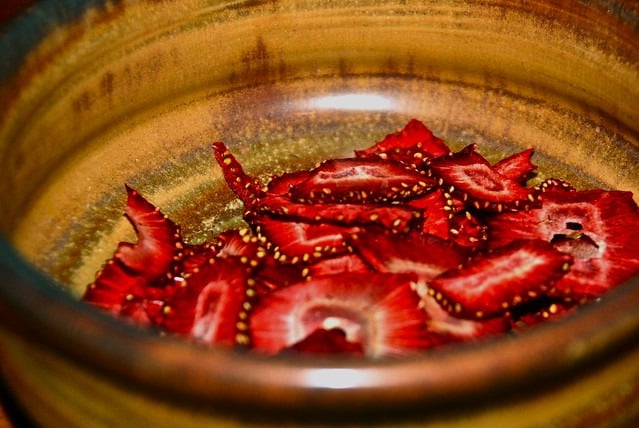
Dried fruit can be safely stored for up to one year at 60 degrees Fahrenheit if kept in an airtight container in a cool, dark place. At 80 degrees Fahrenheit, they can be safely stored for six months. You can use glass jars, plastic containers, or even baggies to store the dry fruit.
Light and moisture will impact the quality of the stored fruit, so it’s a good idea to minimize opening the containers. Storing your dehydrated strawberries in single-serving portions can combat light and moisture exposure.
Dehydrated Strawberries Recipes
Once you’ve finished dehydrating the strawberries, and arranged the jars to your satisfaction on your pantry shelves, it’s time to find recipes. This is the easy part because you can add dehydrated strawberries to just about anything for a burst of flavor and goodness. You can toss them into salads, trail mixes, cereal, and smoothies. You can also use dehydrated strawberries in all kinds of baked goods, granola bars, candy bars, and even frosting. Summer or winter, there’s always some use for strawberries in the kitchen. Here’s one of our favorites to get you started.
Summer Strawberry Trifle
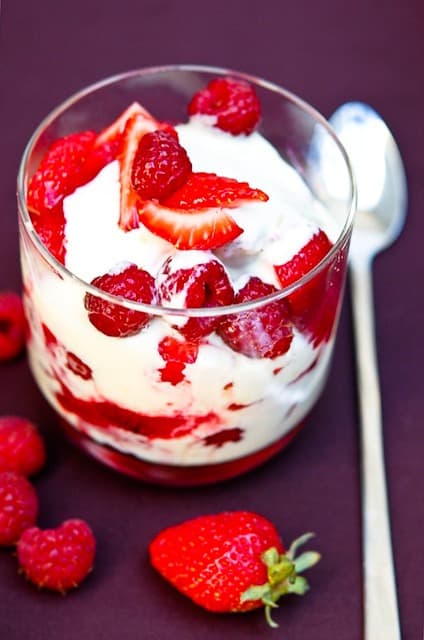
This is a great recipe for a summer barbecue. You will need:
- 4 cups sliced strawberries
- 1 cup whole milk, cold
- 1 cup sour cream
- 1 packet of instant vanilla pudding mix
- 8 cups cubed angel food cake
- 2 cups of whipped heavy whipping cream
- 1 teaspoon grated orange zest
How to Make Summer Strawberry Trifle
Start by rehydrating the strawberries. You can do this by putting them in a container such as a jar or a bowl and pouring boiling water or fruit juice over them until they are completely covered. Let them soak for ten to fifteen minutes, then drain the excess liquid. The strawberries are now ready for use and will not absorb any extra liquids needed for the recipe.
Now for the trifle. Put the milk, sour cream, orange zest, and pudding mix in a large bowl and beat on low speed until you have a thick mixture. Add in the whipped cream.
Next, take half the pieces of angel food cake and line the bottom of a glass bowl with them. Cover this with a layer of strawberries, using a third of the total amount you have. Then add a layer of pudding mixture, using half the total amount you have prepared.
Repeat the layers one more time and then add the remaining third of the strawberries for the topping. Chill for two hours and serve.
Final Thoughts
There are all kinds of good reasons to love strawberries. In fact, the only thing not to like is how difficult it can be to keep them fresh in the kitchen. Dehydrated strawberries solve this problem. Once you learn how to make your own, you will have a healthy and versatile snack on hand at all times.
You can use dehydrated strawberries in all kinds of recipes, adding them to trail mixes, cereal, smoothies, salads, and baked goods. They can be stored for up to one year, which makes it easy to enjoy them in the summer or winter.
The next time you have strawberries in the kitchen and you don’t think you’ll get through them before they spoil, remember what you learned here today. You’ll minimize waste, save money, and have a nutritious snack that’s easy to take with you anywhere and anytime.
Becky is a wildlife enthusiast and pet and livestock care expert with a diploma in canine nutrition. With over a decade of experience in animal welfare, Becky lends her expertise to Simple Family Preparedness through insightful info about pets, livestock, bee keeping, and the practicalities of homesteading.

